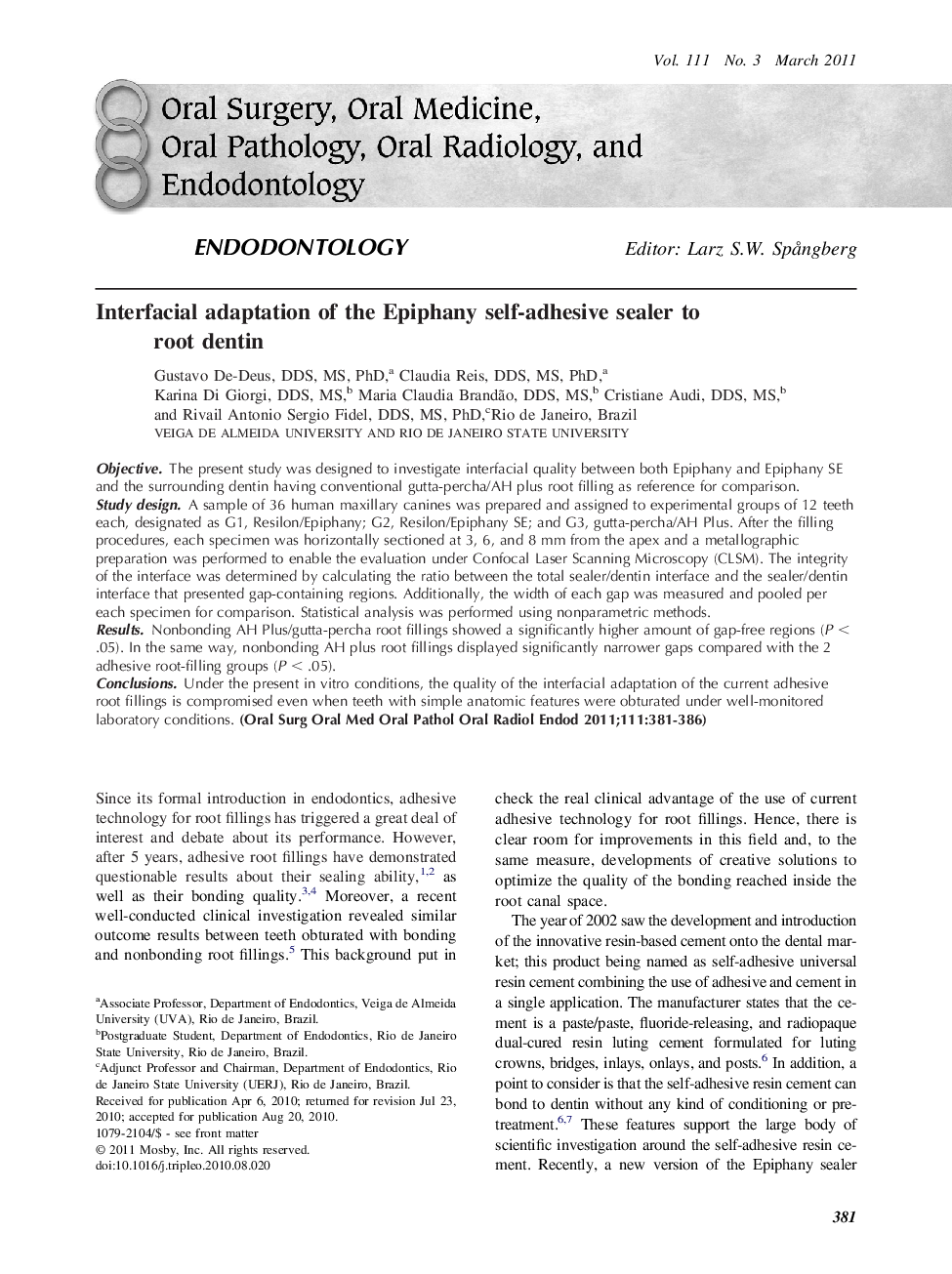| Article ID | Journal | Published Year | Pages | File Type |
|---|---|---|---|---|
| 6059951 | Oral Surgery, Oral Medicine, Oral Pathology, Oral Radiology, and Endodontology | 2011 | 6 Pages |
ObjectiveThe present study was designed to investigate interfacial quality between both Epiphany and Epiphany SE and the surrounding dentin having conventional gutta-percha/AH plus root filling as reference for comparison.Study designA sample of 36 human maxillary canines was prepared and assigned to experimental groups of 12 teeth each, designated as G1, Resilon/Epiphany; G2, Resilon/Epiphany SE; and G3, gutta-percha/AH Plus. After the filling procedures, each specimen was horizontally sectioned at 3, 6, and 8 mm from the apex and a metallographic preparation was performed to enable the evaluation under Confocal Laser Scanning Microscopy (CLSM). The integrity of the interface was determined by calculating the ratio between the total sealer/dentin interface and the sealer/dentin interface that presented gap-containing regions. Additionally, the width of each gap was measured and pooled per each specimen for comparison. Statistical analysis was performed using nonparametric methods.ResultsNonbonding AH Plus/gutta-percha root fillings showed a significantly higher amount of gap-free regions (P < .05). In the same way, nonbonding AH plus root fillings displayed significantly narrower gaps compared with the 2 adhesive root-filling groups (P < .05).ConclusionsUnder the present in vitro conditions, the quality of the interfacial adaptation of the current adhesive root fillings is compromised even when teeth with simple anatomic features were obturated under well-monitored laboratory conditions.
